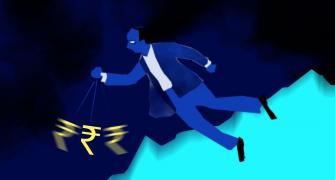Gaming in all three categories -- mobile, online and console gaming -- saw a dramatic increase in numbers in 2007, coming especially from smaller towns and at lower price points.
Online gaming was able to make a mark with about three million gamers, says an internal study done by online and mobile gaming provider Indiagames.
The peak hour for gamers to be active is between 7 pm and 12 midnight. That means gaming is eating into prime-time television shows.
The study also reveals that launches of consoles like XBOX 360 and Sony PS3 saw a surge in consumer interest in the gaming space.
Besides, online gaming saw a tremendous increase in its usage, primarily drawn by mass media campaigns by companies like Zapak.
In terms of genres, casual games still top the chart (47 per cent), followed by strategy and action games (17 per cent each). Sports (9 per cent), MMO (4 per cent), and Racing (6 per cent) complete the gaming pie.
Casual games are very simple games that can be played with ease on the mobile handsets or by using single mouse button. These games are generally free to download.
While a number of these players went to sites like Games2Win and Zapak to play free flash games, Indiagames through its Games on Demand subscription service has recorded about 10,000 paid subscribers.
In 2007, the total game play on the service was recorded as 279,81,060 minutes over 1 year with an average time spent of about 233 minutes per user per month and a peak usage of 981 users.
A recent Comscore survey corroborates the finding. For instance, 10 per cent of the Internet audience in India visited Zapak.com. The portal received six times more pageviews than Yahoo games. The study states that almost 40 per cent of the gamers are from the age-group of 22-35.
Working professionals constitute 18 per cent. Almost 87 per cent of the gamers in India are men while women constitute just about 13 per cent.
Nasscom figures show that the Indian gaming segment -- comprising mobile, computer and console games and development -- touched Rs 192 crore (Rs 1.92 billion) in 2006, and is likely to cross Rs 1,700 crore (Rs 17 billion) by 2010.








